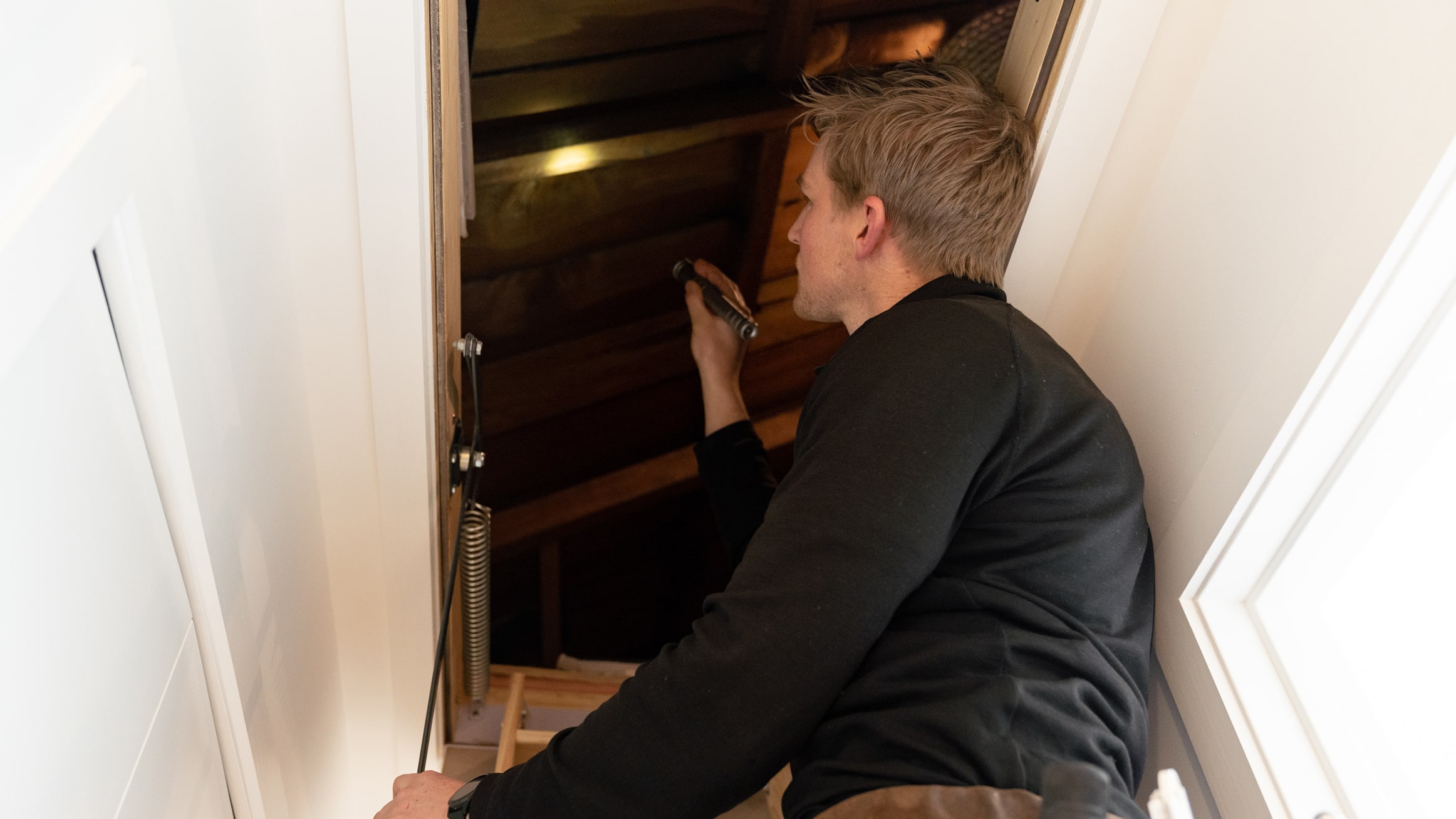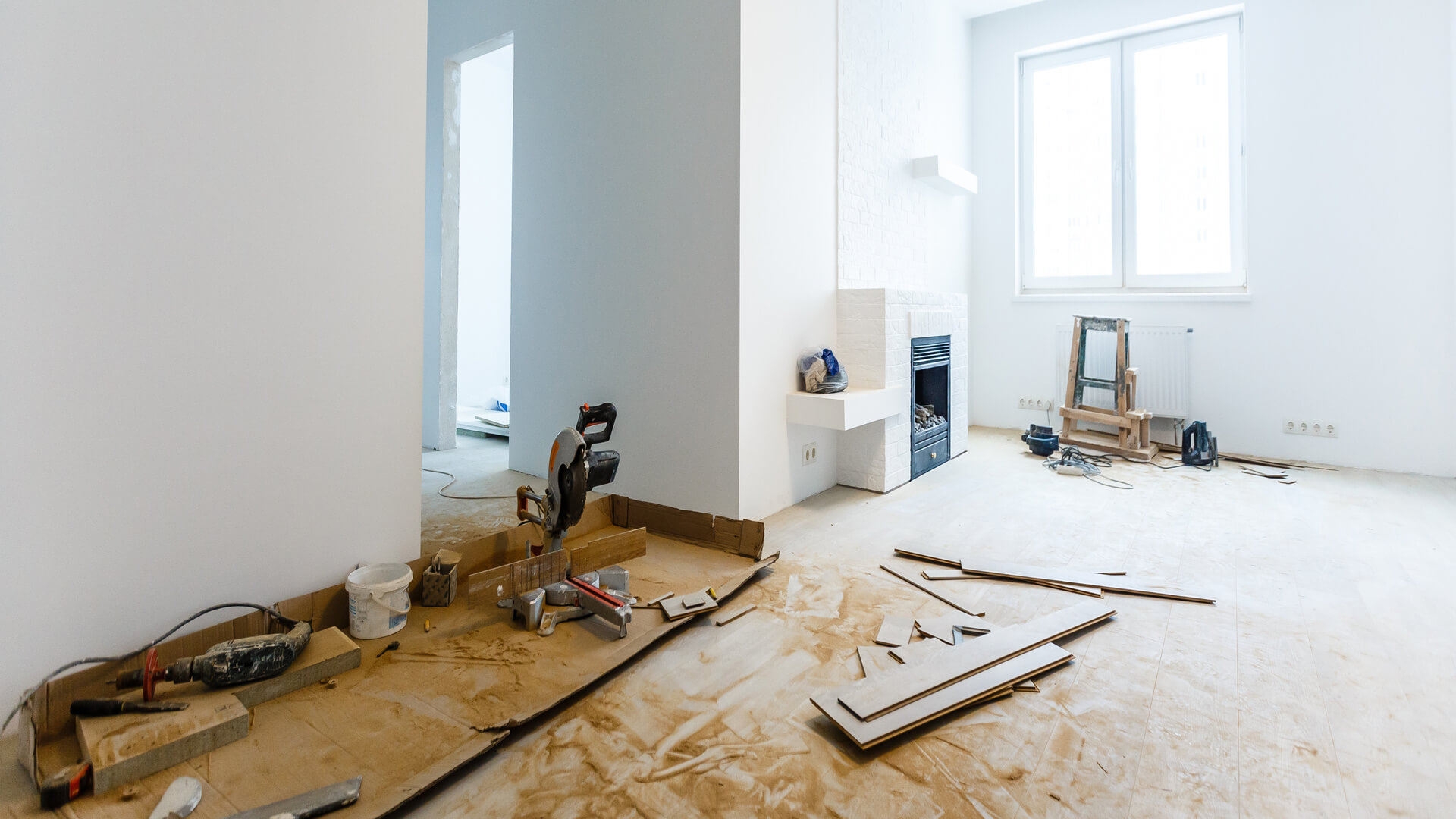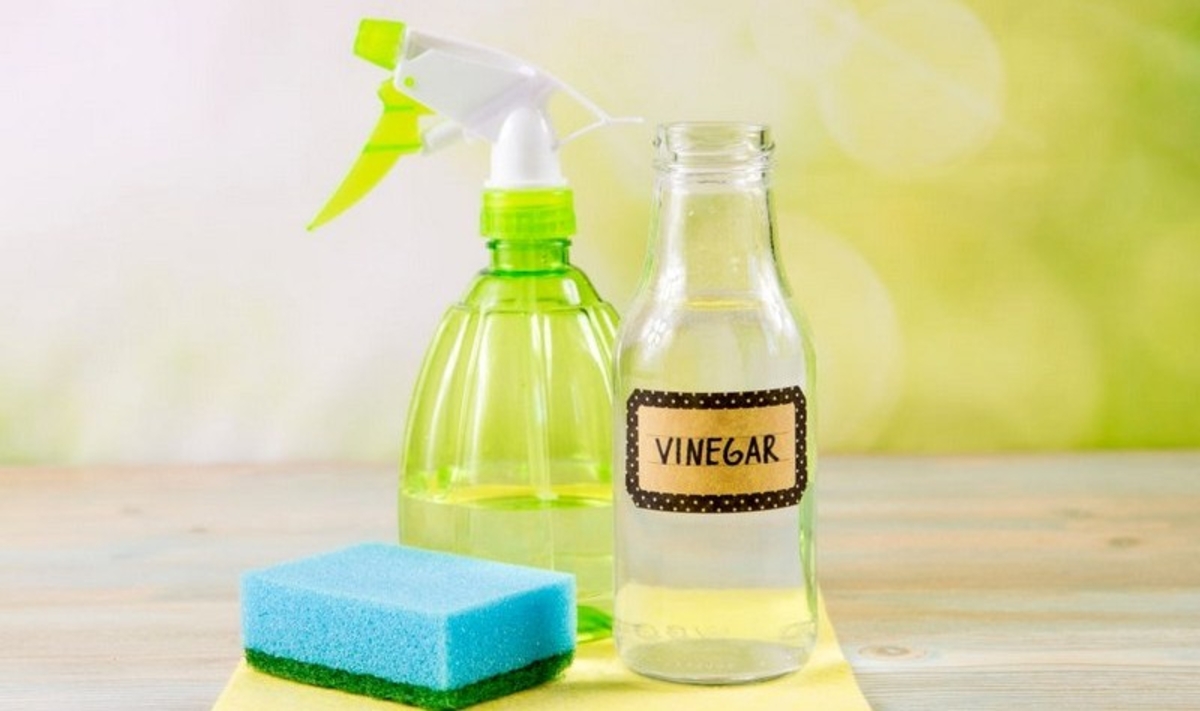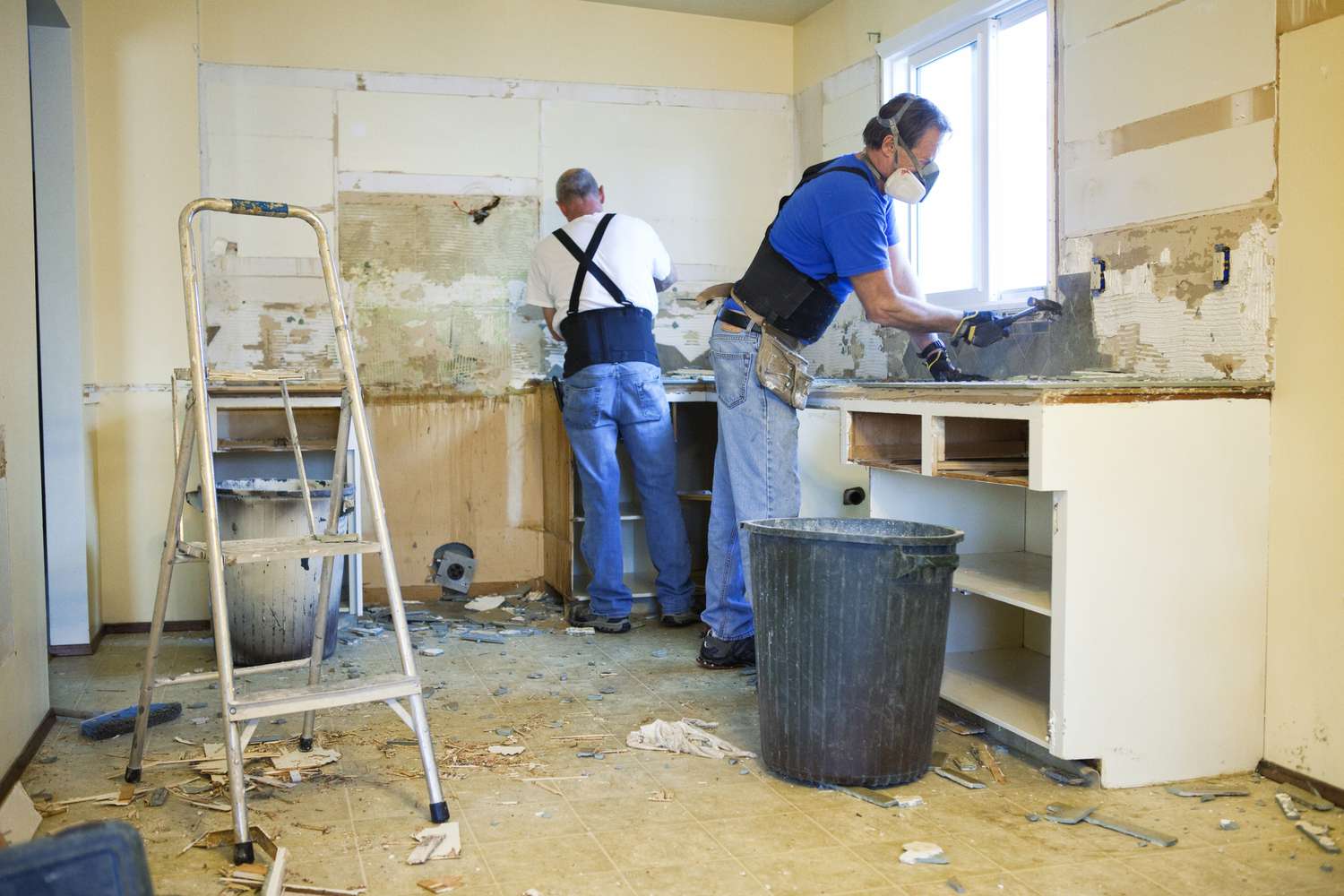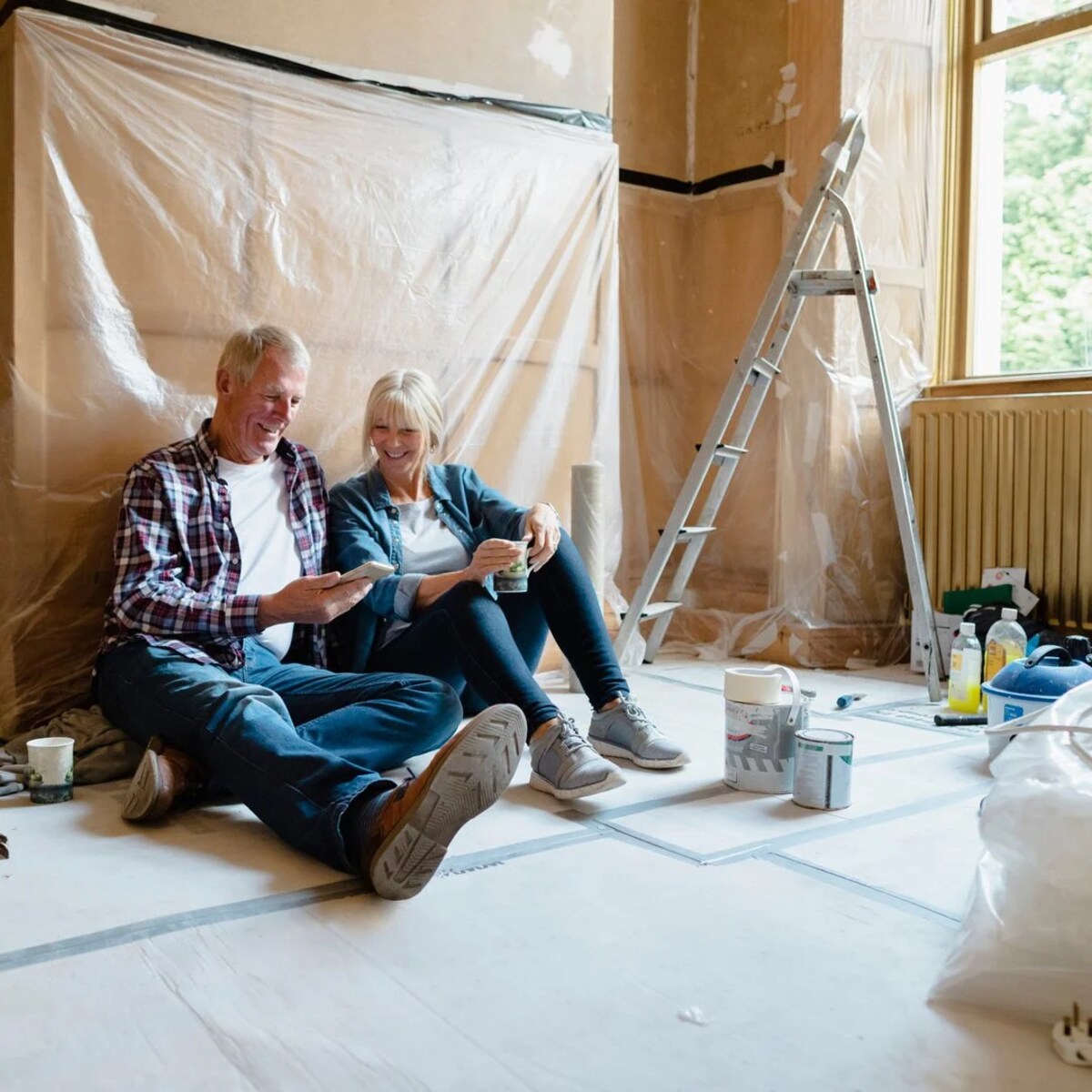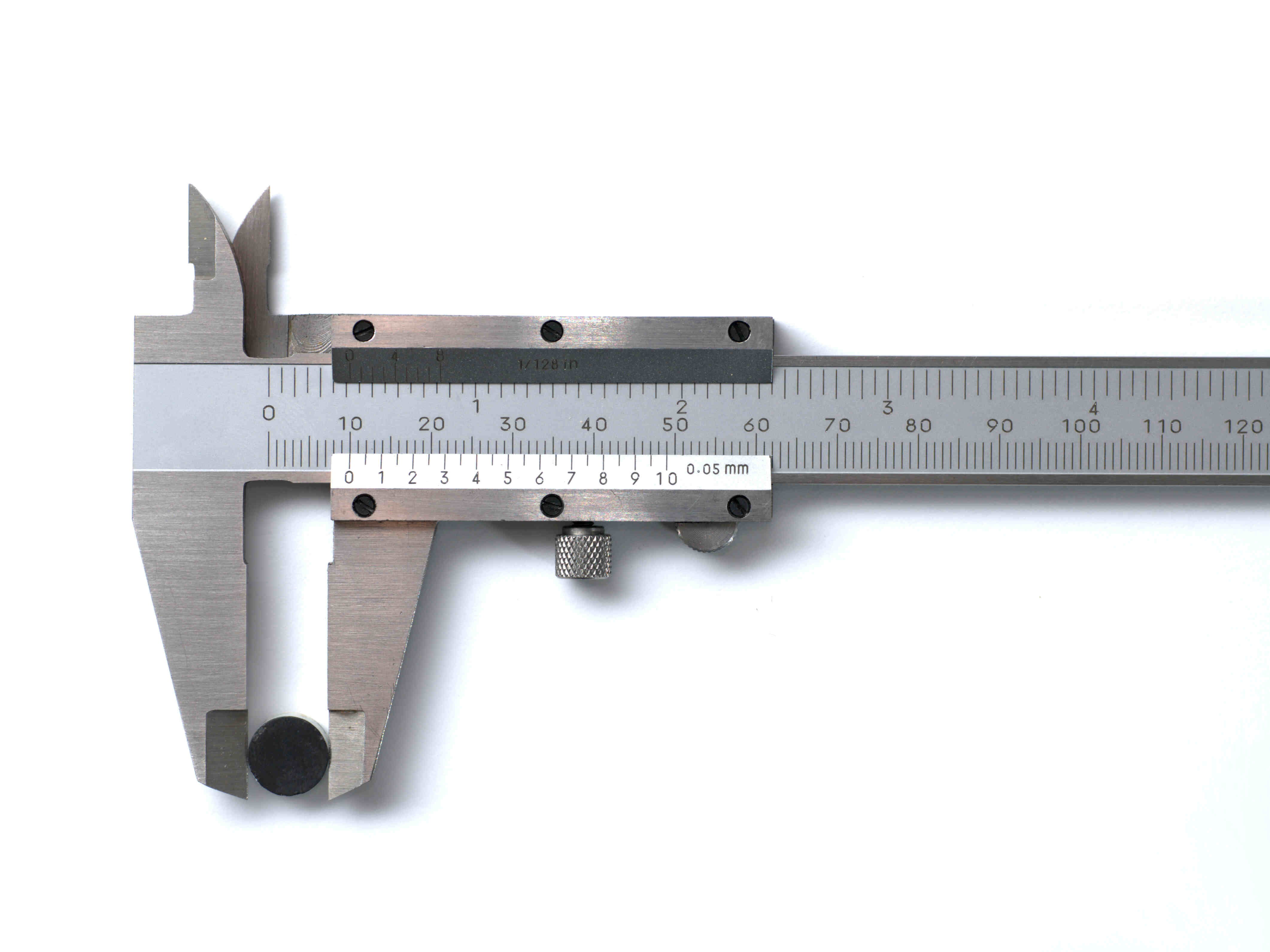Home>Home Maintenance>What Are Major Home Repair Items?
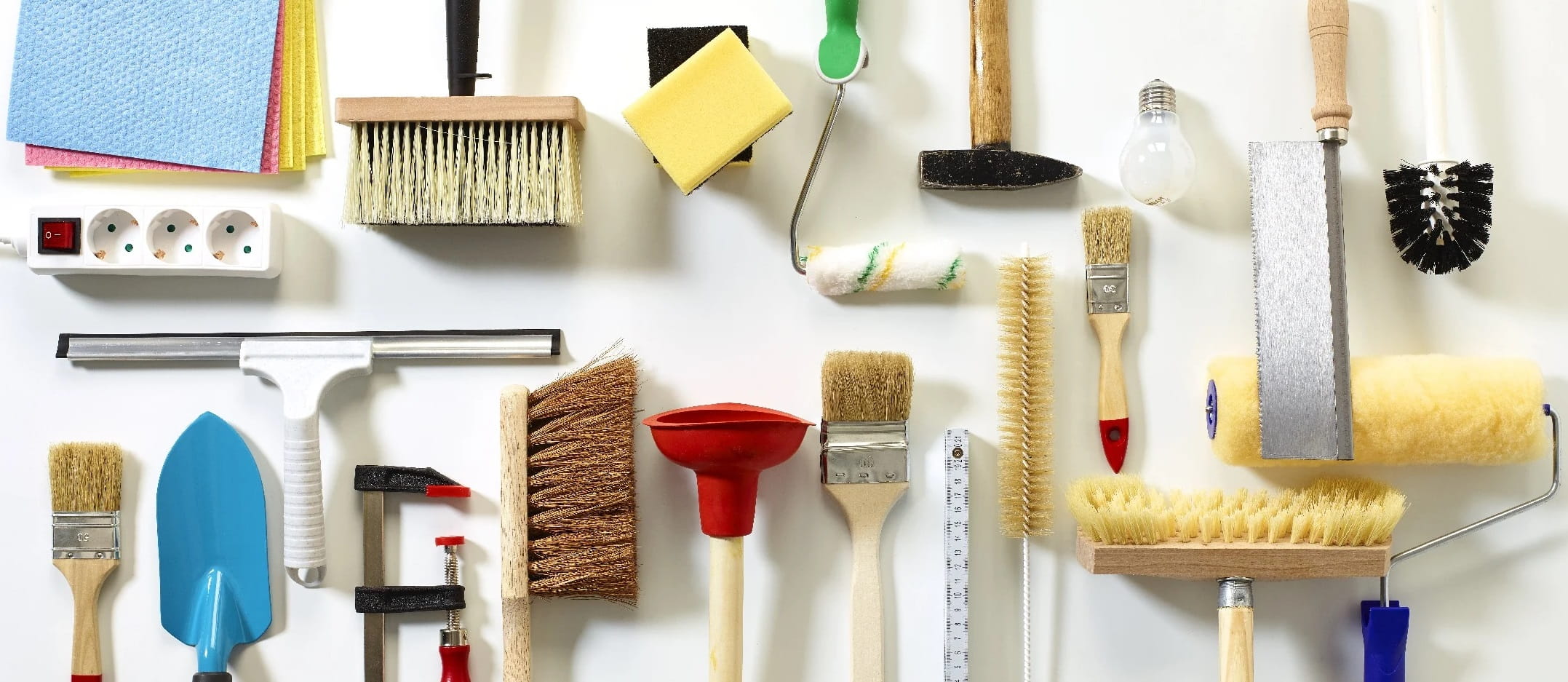

Home Maintenance
What Are Major Home Repair Items?
Modified: March 6, 2024
Learn about major home repair items and how to tackle them with effective home maintenance strategies. Keep your home in top shape with these helpful tips.
(Many of the links in this article redirect to a specific reviewed product. Your purchase of these products through affiliate links helps to generate commission for Storables.com, at no extra cost. Learn more)
Introduction
Welcome to the world of home maintenance! Owning a home brings joy and comfort, but it also comes with the responsibility of taking care of various repair and maintenance tasks. Over time, wear and tear are inevitable, and major home repairs become a necessity to ensure the longevity and safety of your property.
In this article, we will explore some of the most common major home repair items that homeowners often encounter. Whether you’re a new homeowner or someone looking to upgrade your existing property, understanding these repair tasks can help you plan and budget effectively.
From roof repairs to bathroom renovations, we will cover a broad range of home maintenance topics. So, let’s dive in and explore the world of major home repairs!
Key Takeaways:
- Regular maintenance and prompt repairs, such as fixing leaky faucets and addressing small cracks, can prevent major home repair issues and protect your investment in your home.
- Consulting with professionals for complex repairs, like electrical or structural issues, ensures safety and efficient solutions, enhancing the safety and functionality of your home.
Roof Repair
One of the most important components of your home is the roof. It protects you from the elements and plays a crucial role in maintaining the structural integrity of your property. However, over time, roofs can develop issues that require professional attention.
Common roof problems include leaks, missing or damaged shingles, sagging sections, and improper installation. If left unaddressed, these issues can lead to water damage, mold growth, and even structural damage. Therefore, it’s essential to address roof repairs promptly.
When it comes to roof repairs, it’s generally best to hire a professional roofing contractor. They have the expertise, tools, and knowledge to assess the extent of the damage and provide suitable solutions. Some common repairs include replacing damaged shingles, fixing leaks, reinforcing sagging sections, or even replacing the entire roof if necessary.
Regular roof inspections and maintenance can help identify potential issues early on, saving you from costly repairs down the line. It’s advisable to inspect your roof semi-annually, especially after severe weather events or natural disasters.
Keep in mind that the cost of roof repairs can vary depending on the extent of the damage, the size of the roof, and the materials used. Always get multiple quotes from reputable contractors before making a decision.
In addition to repairing existing issues, it’s crucial to invest in preventative measures to extend the lifespan of your roof. This includes cleaning gutters regularly, removing debris, and trimming overhanging branches that can cause damage.
Remember, a well-maintained roof not only protects your home but also adds value and curb appeal. So, if you notice any signs of damage or suspect a problem, don’t hesitate to reach out to a professional for a thorough inspection and the necessary repairs.
Foundation Repair
Your home’s foundation serves as the structural base that supports the entire building. Over time, factors like soil settlement, moisture, and temperature changes can cause foundation issues. It’s crucial to address any foundation problems promptly to prevent further damage and ensure the stability of your home.
Signs of foundation problems may include cracks in the walls or floors, doors and windows that stick or won’t close properly, uneven floors, or visible gaps between the walls and the floor. If you notice any of these signs, it’s best to consult with a professional foundation repair specialist.
Foundation repairs can vary greatly depending on the extent of the damage and the underlying cause. Common repair methods include foundation underpinning, slabjacking, or installing piers to stabilize the foundation.
A professional foundation repair contractor will conduct a thorough inspection to determine the best course of action. They may also assess the surrounding soil conditions and provide recommendations to mitigate future issues.
Foundation repairs can be complex and costly, so it’s essential to address them as soon as possible. Ignoring foundation problems can lead to severe structural damage, compromising the safety and value of your home.
Prevention is key when it comes to maintaining a healthy foundation. Ensure proper drainage around your home by directing water away from the foundation. Regularly check for and repair any plumbing leaks that could cause excessive moisture near the foundation. Additionally, maintaining a consistent moisture level in the soil around the foundation can help minimize movement and soil settlement.
Remember, foundation repair is not a DIY project. It requires expertise and specialized equipment to ensure a proper and lasting solution. Always consult with a professional foundation repair contractor to assess and address any foundation issues in your home.
Plumbing Issues
Plumbing issues are a common occurrence in many homes and can range from minor annoyances to major problems that require immediate attention. Ignoring plumbing issues can lead to water damage, mold growth, and costly repairs. Therefore, it’s important to address plumbing problems as soon as they arise.
One of the most common plumbing issues is a leaky faucet. Although it may seem like a minor annoyance, a dripping faucet can waste a significant amount of water and also indicate underlying plumbing problems. In most cases, fixing a leaky faucet involves replacing worn-out washers or other faulty components.
Clogged drains are another common plumbing issue that can disrupt your daily routine. Hair, grease, and food particles are typical culprits that can lead to clogged drains. Using a plunger or a drain snake can often clear minor clogs. However, for more stubborn blockages, it may be necessary to call a professional plumber to use specialized tools.
Toilets can also experience various plumbing issues, such as running continuously, clogging frequently, or leaking. These issues not only waste water but can also cause inconvenience and increased water bills. Most toilet problems can be resolved by replacing faulty components like flappers or adjusting the water level in the tank.
Over time, the pipes in your home can deteriorate or develop leaks. This can cause water damage to walls, ceilings, and floors. If you notice water stains, dampness, or musty smells, it’s important to address these issues promptly to prevent further damage. A professional plumber can assess the situation, locate the source of the leak, and repair or replace the affected pipes.
When it comes to plumbing issues, it’s often best to seek professional help. A licensed plumber has the expertise and knowledge to diagnose and fix plumbing problems efficiently. They can also provide guidance on preventive maintenance to help avoid future issues.
Remember, regular maintenance is key to preventing plumbing problems. Avoid pouring grease or coffee grounds down the drains, use drain screens to catch hair and debris, and be mindful of what you flush down the toilet. Additionally, scheduling periodic inspections by a professional plumber can help identify potential issues before they become more significant problems.
By addressing plumbing issues promptly and taking preventative measures, you can maintain a functional and efficient plumbing system in your home.
Electrical Problems
Electrical problems can range from minor inconveniences to hazardous situations that pose a risk to your home and personal safety. It’s crucial to address electrical issues promptly to prevent potential fires, electrical shocks, or damage to your electrical appliances and systems.
One common electrical problem is a tripped circuit breaker. A circuit breaker is designed to protect your home from overloaded circuits. If you experience frequent circuit breaker trips, it may indicate an electrical issue, such as overloaded circuits, faulty wiring, or a malfunctioning appliance. Consulting with a licensed electrician can help identify and rectify the underlying cause of the problem.
Flickering lights can also be an indication of electrical issues. Loose connections, faulty light fixtures, or problems with the electrical wiring can cause lights to flicker. If replacing the light bulb doesn’t solve the problem, it’s best to consult with an electrician to diagnose and address the issue.
Outlets that are hot to the touch or produce sparks when you plug in or unplug devices are another sign of electrical problems. These issues can indicate overloaded circuits, loose connections, or faulty wiring. It’s important to immediately unplug any devices connected to the affected outlet and seek professional assistance to avoid potential electrical hazards.
Another common electrical issue is the presence of outdated or damaged electrical wiring. Homes with aging wiring or those built before the 1980s may have outdated systems that are no longer up to code. Damaged or frayed wiring can also pose a fire hazard. Upgrading the electrical wiring in your home should be done by a licensed electrician to ensure it meets safety standards.
Electrical problems are best handled by professionals. Attempting to fix electrical problems yourself can be dangerous and can void your home insurance. Licensed electricians have the expertise, tools, and knowledge to diagnose and repair electrical issues safely and efficiently.
Preventive maintenance is also crucial in minimizing electrical problems. It’s essential to regularly inspect and replace damaged or worn-out cords, plugs, and outlets. Avoid overloading circuits by evenly distributing your electrical load throughout your home. Additionally, consider installing ground fault circuit interrupters (GFCIs) in areas prone to moisture, such as kitchens and bathrooms, to protect against electrical shocks.
Remember, electrical problems should never be ignored or taken lightly. If you encounter any signs of electrical issues, it’s important to consult with a licensed electrician to properly assess and resolve the problem.
Read more: How Many Women Major In Home Decor
Heating and Cooling System Repairs
Your heating and cooling system, also known as HVAC (Heating, Ventilation, and Air Conditioning), plays a crucial role in maintaining a comfortable living environment in your home. When your HVAC system experiences issues, it can lead to discomfort, decreased energy efficiency, and even potential health hazards. Therefore, addressing heating and cooling system repairs promptly is essential.
One common problem homeowners encounter with their HVAC system is inadequate heating or cooling. If your home isn’t reaching the desired temperature or if the airflow feels weak, it may indicate a problem with your system. Issues with the thermostat, clogged filters, or faulty components can contribute to poor performance. Regularly replacing filters and scheduling routine maintenance can help prevent such issues.
Another common problem is an HVAC system that cycles on and off frequently or runs continuously. This can indicate issues such as a malfunctioning thermostat, blower motor problems, or refrigerant leaks. A professional HVAC technician can diagnose the problem and provide the necessary repairs or adjustments to restore proper operation.
Leaking ducts or insufficient airflow can also significantly impact the efficiency of your HVAC system. Leaks in the ductwork can cause conditioned air to escape, resulting in higher energy bills and reduced comfort. Cleaning and sealing ducts or repairing any damage can help improve the efficiency of your heating and cooling system.
Furnaces and air conditioners are complex systems with multiple components that can wear out or malfunction over time. Faulty igniters, worn-out belts, or malfunctioning motors are common issues that may require professional attention. Regular maintenance by an HVAC technician can help identify and address these issues before they become major problems.
It’s important to note that attempting to repair or service HVAC systems yourself can be dangerous and may void warranties. HVAC systems involve electrical components, refrigerants, and complex mechanical systems that require specialized knowledge and equipment. It is always best to consult with a licensed HVAC professional for any repairs or maintenance.
Preventive maintenance is key to keeping your HVAC system operating efficiently. This includes regular filter replacement, cleaning coils, and scheduling annual maintenance inspections by a professional technician. Taking these proactive measures can help prevent costly repairs and extend the lifespan of your system.
Remember, a properly functioning heating and cooling system is essential for a comfortable home. If you encounter any issues with your HVAC system, it’s best to consult with a licensed HVAC technician to diagnose and address the problem promptly.
Window Replacement
Windows play a crucial role in the functionality, energy efficiency, and aesthetics of your home. Over time, windows can deteriorate, become drafty, or experience issues that require replacement. Upgrading to new, energy-efficient windows not only enhances the comfort and appearance of your home but can also result in energy savings and increased resale value.
One common reason homeowners consider window replacement is due to poor insulation. Old or damaged windows can allow drafts and air leaks, resulting in increased energy bills and a less comfortable living environment. Upgrading to energy-efficient windows with features such as low-emissivity (Low-E) glass and insulated frames can greatly improve insulation and reduce energy loss.
Another reason for window replacement is aesthetic enhancement. New windows can transform the look and feel of your home, both inside and out. With a wide range of window styles, sizes, and materials available, you have the opportunity to choose windows that complement your home’s architectural style and personal preferences.
Window replacement can also address functionality and maintenance issues. If your existing windows are difficult to open or close, have broken or malfunctioning hardware, or require constant maintenance, it may be time to consider replacement. New windows are designed with improved functionality, including easy operation, smooth opening and closing mechanisms, and low-maintenance materials.
When planning for window replacement, it’s important to consider other factors such as noise reduction and UV protection. Upgraded windows with multiple panes, gas-filled chambers, and special coatings can reduce noise from outside and protect your furniture and flooring from fading due to UV rays.
Window replacement is a significant investment, and it’s essential to choose a reputable window installation company. Look for a company with a proven track record, positive customer reviews, and appropriate certifications. Obtain multiple quotes and compare the quality, warranties, and energy efficiency ratings of different window options.
Proper installation is crucial for the functionality and longevity of your new windows. Improper installation can result in air and water leaks, decreased energy efficiency, and potential structural damage. Make sure the company you choose provides professional installation and offers warranty coverage for both the windows and installation.
Remember, window replacement is an opportunity to improve the comfort, energy efficiency, and appearance of your home. Consult with window professionals to explore your options and find the best solution that fits your needs and budget.
Exterior Siding Repair
The exterior siding of your home not only protects it from the elements but also plays a crucial role in enhancing its curb appeal. Over time, siding can become damaged, faded, or develop issues that require repair or replacement. Addressing exterior siding repair promptly can help maintain the integrity and aesthetics of your home.
One common issue with exterior siding is the presence of cracks, chips, or holes. These can occur due to weather conditions, impact damage, or normal wear and tear. Repairing small cracks or holes can prevent further damage and water intrusion, which can lead to significant structural issues and mold growth. Depending on the severity and extent of the damage, repairs may involve patching, caulking, or replacing damaged siding panels or sections.
Fading or discoloration of siding is another common concern. Exposure to UV rays, weather conditions, and age can cause the color of siding to fade or become uneven. This can affect the overall appearance of your home. If the fading is minimal, power washing and applying paint or a weather-resistant coating may restore the siding’s appearance. In more severe cases, replacing the faded siding with new panels or opting for a complete siding replacement may be necessary.
Moisture damage is a significant issue that can affect the integrity of your siding and the underlying structure of your home. Water intrusion can lead to rot, mold, and deteriorating siding. It’s important to address moisture-related issues promptly. This may involve repairing or replacing damaged or improperly installed siding, improving drainage, or sealing gaps and cracks to prevent water infiltration.
In addition to repairing existing issues, regular maintenance of exterior siding is essential to prolong its lifespan. This includes cleaning the siding thoroughly, inspecting for any signs of damage or wear, and addressing any issues promptly. Regularly inspecting for signs of insect infestation, such as termites, is also crucial as they can cause significant damage to your siding and home.
When it comes to exterior siding repair or replacement, it’s advisable to consult with professionals. A siding contractor will assess the condition of your siding, provide recommendations for repairs or replacement, and ensure the work is done correctly and efficiently.
Choosing the right material for your siding is also crucial. Different materials, such as vinyl, wood, fiber cement, or metal, have varying levels of durability, maintenance requirements, and aesthetic appeal. Consider factors such as your budget, climate, and desired appearance when selecting siding material.
Remember, addressing exterior siding repair promptly not only protects your home but also enhances its curb appeal. Regular maintenance and timely repairs can help you maintain a beautiful and well-protected home for years to come.
Regularly inspect and maintain your roof, foundation, HVAC system, and plumbing to catch potential issues early and avoid major home repair expenses.
Chimney Repair
A properly functioning chimney is essential for safe and efficient fireplace or wood-burning stove operation. Over time, chimneys can experience wear and tear, structural issues, or damage that requires repair. Addressing chimney repairs promptly is crucial to ensure the safety and functionality of your fireplace or stove.
One of the most common chimney issues is the deterioration of the mortar between the bricks or stones, known as mortar joints. This can occur due to weather exposure, age, or improper construction. When mortar joints deteriorate, it can lead to water leaks, brick movement, and eventually compromise the structural integrity of the chimney. Tuckpointing, which involves removing damaged mortar and replacing it with fresh mortar, is a common repair method for deteriorating mortar joints.
Another common problem is chimney flashing leaks. Chimney flashing is the metal barrier that seals the gap between the chimney and the roof, preventing water from entering. Over time, flashing can become damaged or improperly installed, resulting in water leaks and potential damage to the chimney and surrounding areas. Repairing or replacing the flashing is necessary to prevent further water intrusion and potential structural damage.
Cracks or fractures in the chimney can also occur due to freeze-thaw cycles or intense heat exposure. These cracks can compromise the structural integrity of the chimney and increase the risk of water damage, chimney fires, and carbon monoxide leaks. It’s important to address chimney cracks promptly by applying appropriate sealants or conducting necessary masonry repairs to prevent further damage.
The chimney crown, located at the top of the chimney, acts as a protective barrier against water and debris. If the crown is cracked, deteriorated, or improperly constructed, water can seep into the chimney structure and cause damage over time. Repairing or replacing the chimney crown is necessary to prevent water damage and extend the lifespan of the chimney.
Chimney liners are essential for proper venting and safety. If your chimney does not have a liner or if the existing liner is damaged, it can increase the risk of fires and carbon monoxide leaks. Repairing or replacing chimney liners should be done by a professional to ensure compliance with safety codes and proper installation.
Regular chimney inspections, preferably conducted by a certified chimney sweep, can help identify potential issues early on and prevent costly repairs. It’s recommended to have your chimney inspected at least once a year, especially before the start of the cold season when you’ll be using your fireplace or wood-burning stove more frequently.
Remember, chimney repairs should be done by professionals who have experience and knowledge in chimney systems. Proper repairs and maintenance not only ensure the safety and functionality of your chimney but also enhance the enjoyment of your fireplace or wood-burning stove.
Read more: What Is Civil Engineering Major
Deck or Patio Repair
A deck or patio is an extension of your living space, providing a comfortable area for relaxation, entertaining, and enjoying the outdoors. Over time, decks and patios can experience wear and tear, weather damage, or structural issues that require repair or maintenance. Addressing deck or patio repairs quickly is essential to maintain their safety, functionality, and visual appeal.
One common issue with decks and patios is the presence of cracks or deterioration in the surface. This can occur due to exposure to the elements, freeze-thaw cycles, or normal wear and tear. Small cracks can usually be repaired with appropriate sealants or patching compounds. However, larger or more extensive damage may require partial or full replacement of the decking material.
Another common problem is loose or warped boards. Over time, constant foot traffic, exposure to the elements, or improper installation can cause boards to become loose or warp. Loose boards can be a tripping hazard, while warped boards can affect the stability and evenness of the deck or patio surface. Replacing individual boards or realigning them can help resolve these issues and restore the stability and safety of your outdoor living area.
Structural integrity is critical for the safety of your deck or patio. Over time, support posts, beams, or joists can become damaged or weakened. Signs of structural issues may include sagging or uneven areas, excessive movement, or a feeling of instability. Repairing or reinforcing weakened or damaged structural components is essential to maintain the stability and safety of your deck or patio. Consulting with a professional contractor or structural engineer is recommended for structural repairs.
Rot or decay is another issue that can affect decks, especially those made of wood. Moisture exposure, insects, and fungal growth can cause wood to rot or decay over time. Regular inspection and maintenance, such as sealing and staining, can help prevent rot. When significant rot is present, partial or full replacement of affected sections may be necessary.
Handrails and balusters are crucial for the safety of your deck, especially if it is elevated above ground level. Loose or damaged handrails and balusters can pose a safety hazard. Repairing or replacing these components is essential to ensure the safety and code compliance of your deck or patio.
Maintenance plays a crucial role in preventing the need for extensive repairs. Regularly cleaning your deck or patio, removing debris, and conducting routine inspections can help identify issues early on. Applying sealant or stain periodically can protect the surface and extend its lifespan.
When it comes to deck or patio repairs, it’s advisable to consult with professionals who have experience in deck construction and maintenance. They can assess the extent of the damage, recommend suitable repairs or replacements, and ensure quality workmanship.
Remember, addressing deck or patio repairs promptly not only enhances the safety and functionality of your outdoor space but also prolongs its lifespan, allowing you to enjoy it for years to come.
Gutter Repair
Gutters play a crucial role in protecting your home from water damage by channeling rainwater away from your roof and foundation. Over time, gutters can become clogged, damaged, or experience issues that require repair to ensure proper functioning. Addressing gutter repairs promptly is essential to maintain the integrity of your home and prevent potential water-related problems.
One common issue with gutters is clogging caused by leaves, debris, or other foreign materials. Clogged gutters can obstruct the flow of water and lead to water overflow, which can cause damage to your roof, siding, or foundation. Cleaning the gutters regularly is essential to prevent clogs. This can be done by removing debris by hand or using tools like gutter scoops or pressure washers.
If you notice water overflowing from your gutters, it may indicate a problem with the gutter slope or alignment. Gutters should be sloped correctly to ensure optimal water flow and prevent standing water. Additionally, gutters should be securely attached to the fascia board to prevent sagging or detachment. Adjusting the slope or realigning the gutters may be necessary to resolve these issues.
Gutters can become damaged due to various factors, including severe weather conditions, falling branches, or accidents. Common gutter damages include cracks, holes, dents, or loose connections. Repairing damaged sections of the gutter can often be done by patching the affected area or replacing the damaged segment.
Another common gutter issue is leaks. Leaks can occur at joints, seams, or connections between gutter sections. Water leaking from the gutter can cause damage to the surrounding areas and compromise the functionality of the gutter system. Applying appropriate sealants or resealing joints can help resolve leakage problems.
Downspouts are essential components of the gutter system, as they direct water away from your home’s foundation. If you notice water pooling near the foundation or flowing back towards your home, it may indicate a problem with the downspouts. Clearing any obstructions, extending the length of the downspout, or redirecting the downspout away from your home can help resolve these issues.
Regular gutter maintenance is key to preventing major repairs. In addition to cleaning the gutters, it’s important to inspect them for any signs of damage or wear. By catching and addressing issues early on, you can prevent them from escalating into costlier repairs.
When it comes to gutter repairs, it’s advisable to consult with professionals who have experience in gutter installation and maintenance. They can assess the extent of the damage, provide suitable repair solutions, and ensure that your gutter system is functioning properly.
Remember, gutter repair is not just about maintaining the appearance of your home, but also about protecting its structural integrity. By addressing gutter issues promptly, you can prevent potential water damage and maintain the value of your home.
Painting and Drywall Repair
Painting and drywall repair are common home maintenance tasks that can help refresh the look of your home and maintain its structural integrity. Over time, walls can develop cracks, holes, or experience wear and tear that require repair and a fresh coat of paint. Addressing painting and drywall repair can revitalize your living space and ensure a smooth, polished finish.
Drywall is a common building material used for interior walls and ceilings. It can become damaged due to accidental impacts, water leaks, or settling of the foundation. Common drywall issues include cracks, holes, or dents. Repairing drywall involves patching these damages with joint compound, sanding, and applying a new layer of paint or texture to blend with the surrounding area.
If you have wallpaper that is peeling or outdated, it may be time to consider removing and replacing it with a fresh coat of paint. Wallpaper removal can be a labor-intensive process, but it provides a blank canvas for a new paint color or texture. Properly preparing the walls after wallpaper removal and applying primer before painting are essential for achieving a smooth and long-lasting finish.
If the paint on your walls is peeling, chipping, or showing signs of wear, it’s time for a fresh coat. Painting not only enhances the appearance of your home but also provides protection against moisture, UV rays, and general wear and tear. Before painting, it’s important to prepare the surfaces by cleaning, sanding, and priming, as this ensures proper adhesion and a smooth finish.
When it comes to selecting paint colors, consider the overall style and ambiance you want to create in your home. Neutral colors are versatile and can create a timeless look, while bold colors can add personality and make a statement. If you’re unsure, consulting with a professional painter or interior designer can help you choose the right color palette for your space.
In addition to aesthetic improvements, painting and drywall repair also contribute to the maintenance and longevity of your home. Properly sealed and painted walls protect against moisture, which can lead to mold and mildew growth. Regularly inspecting walls for cracks, peeling paint, or water damage is essential and allows for timely repairs.
While small drywall repairs or painting tasks can be DIY projects, larger or more complex projects may require professional assistance. Professional painters have the tools, experience, and expertise to ensure a high-quality finish and efficient completion of the project.
Remember, painting and drywall repair are important maintenance tasks that can enhance the overall appearance and condition of your home. By addressing these tasks promptly and effectively, you can create a beautiful and well-maintained living space for you and your family to enjoy.
Flooring Repairs
Your floors endure constant foot traffic and are subjected to daily wear and tear. Over time, various issues can arise, such as scratches, stains, squeaks, or damaged tiles, that may require repair or replacement. Addressing flooring repairs promptly not only maintains the aesthetic appeal of your home but also ensures a safe and sturdy surface for your family to walk on.
One common flooring issue is scratches, particularly on hardwood or laminate floors. These can occur from moving furniture, pet claws, or abrasive materials. Minor scratches can often be remedied using touch-up pens, wax, or special cleaning products. For deeper scratches or extensive damage, refinishing or replacing the affected boards may be necessary to restore the floor’s appearance.
Stains are another common problem, especially on carpets, rugs, or porous materials. Spills, dirt, or pet accidents can lead to unsightly stains. The type of stain will determine the appropriate cleaning method. For tough stains or discoloration that cannot be removed, you may need to consider replacing the affected area or the entire flooring if necessary.
Squeaky floors can be not only annoying but also an indication of an underlying issue. Squeaks are usually caused by loose floorboards or subfloor movement. Securing loose boards with screws or nails can often resolve the issue, but it’s important to address any underlying structural problems to prevent recurring squeaks.
Tiles are a popular flooring option but can experience issues like cracks, chips, or loose grout. Damaged tiles can be replaced individually, ensuring a seamless and cohesive look. Cracked or missing grout can also be repaired by regrouting the affected areas. Regular cleaning and maintenance can help prevent grout issues and prolong the lifespan of your tiled floors.
If you have carpeted floors, worn-out or frayed carpet can detract from the overall appearance of your home. In some cases, professional carpet stretching or patching can help address these issues. However, for excessive wear or extensive damage, replacing the carpet may be the best solution to achieve a fresh and renewed look.
When it comes to flooring repairs, the extent of the damage and the type of flooring material will determine the best course of action. Minor repairs or maintenance can often be done as DIY projects, but for larger or more complex issues, it’s advisable to consult with professionals who specialize in flooring repairs.
Remember, maintaining your floors goes beyond aesthetics. Addressing flooring repairs promptly and conducting regular maintenance can eliminate hazards, increase the lifespan of your floors, and contribute to a safe and comfortable living environment for you and your family.
Read more: What Major For Interior Design
Bathroom and Kitchen Renovations
Bathroom and kitchen renovations are two of the most popular home improvement projects that can significantly enhance the functionality, aesthetics, and value of your home. Whether you’re looking to update outdated fixtures, improve storage space, or create a more modern and inviting atmosphere, these renovations can breathe new life into these essential areas of your home.
The bathroom is a space for relaxation and personal care, and an updated bathroom can greatly enhance your daily routine. Renovations may include replacing old, worn-out fixtures with new ones, such as a modern sink, faucet, toilet, or showerhead. Tile or flooring replacement can also give your bathroom a fresh and stylish look. Creating additional storage space, whether through new cabinets, shelves, or medicine cabinets, can help declutter and organize your bathroom.
The kitchen is often referred to as the heart of the home, where meals are prepared and memories are made. A kitchen renovation can transform this space into a functional and inviting area for cooking and entertaining. Upgrading appliances to newer, energy-efficient models can improve performance while saving on utility bills. Adding new countertops, backsplashes, or cabinets can enhance both the appearance and functionality of your kitchen. Consider the layout and flow of your kitchen to ensure efficient use of space during the renovation.
Both bathroom and kitchen renovations may involve plumbing and electrical work, so it’s essential to consult with professionals experienced in these areas. Hiring a licensed contractor can ensure that the renovations are done safely, adhere to building codes, and are completed with attention to detail.
Before starting the renovations, it’s important to establish a budget and have a clear vision of your desired outcome. Consider factors such as the style, materials, and timeline for the project. Researching and selecting reputable suppliers and contractors can ensure quality materials and workmanship.
In addition to aesthetics, it’s important to focus on functionality and efficiency. Consider the placement of fixtures, the flow of movement, and the accessibility of storage areas. Incorporating eco-friendly features, such as energy-efficient appliances and water-saving fixtures, can also benefit both the environment and your wallet in the long run.
During the renovation process, it’s important to be prepared for some inconvenience and disruption to your daily routine. Creating a temporary kitchen or bathroom setup in another area of your home can help minimize the inconvenience while the renovations are underway.
Remember, bathroom and kitchen renovations can significantly improve your home’s livability, comfort, and value. Hiring professionals, planning carefully, and using high-quality materials will ensure that your renovations enhance your home’s functionality and offer a space that you can enjoy for years to come.
Conclusion
Home maintenance is a vital aspect of homeownership, and addressing major repair items is essential for the safety, functionality, and aesthetics of your property. By maintaining and repairing your home, you can protect your investment and enhance your overall quality of life.
From roof repairs to bathroom and kitchen renovations, each aspect of home maintenance plays a crucial role in ensuring your home remains in optimal condition. Regular inspections, prompt repairs, and proactive maintenance are key to preventing small issues from becoming major problems.
While some repairs can be tackled as DIY projects, it’s important to consult with professionals for complex or potentially hazardous tasks. Licensed contractors, electricians, plumbers, and other experts have the skills, knowledge, and tools necessary to perform repairs safely and efficiently.
When undertaking home repairs, it’s beneficial to plan and budget wisely. Establishing a clear vision, researching materials and contractors, and setting a realistic budget help ensure a successful outcome. Consider seeking multiple quotes and thoroughly vetting contractors to find professionals who offer quality workmanship at a fair price.
Furthermore, regular inspections, routine maintenance, and preventive measures can help reduce the frequency and cost of major repairs. Keeping up with routine tasks such as cleaning gutters, inspecting and sealing cracks, and replacing filters can go a long way in preserving the integrity of your home.
Finally, remember to infuse your own personal touch and creativity into your home maintenance projects. Enhancing your living space should not only be about functionality but also about creating a space that reflects your unique style and personality.
In conclusion, by understanding and addressing major home repair items, you can maintain a safe, comfortable, and aesthetically pleasing living environment. Whether it’s repairing your roof, replacing windows, or updating your kitchen, taking care of your home will not only enhance its longevity but also contribute to your overall happiness and well-being.
Frequently Asked Questions about What Are Major Home Repair Items?
Was this page helpful?
At Storables.com, we guarantee accurate and reliable information. Our content, validated by Expert Board Contributors, is crafted following stringent Editorial Policies. We're committed to providing you with well-researched, expert-backed insights for all your informational needs.
